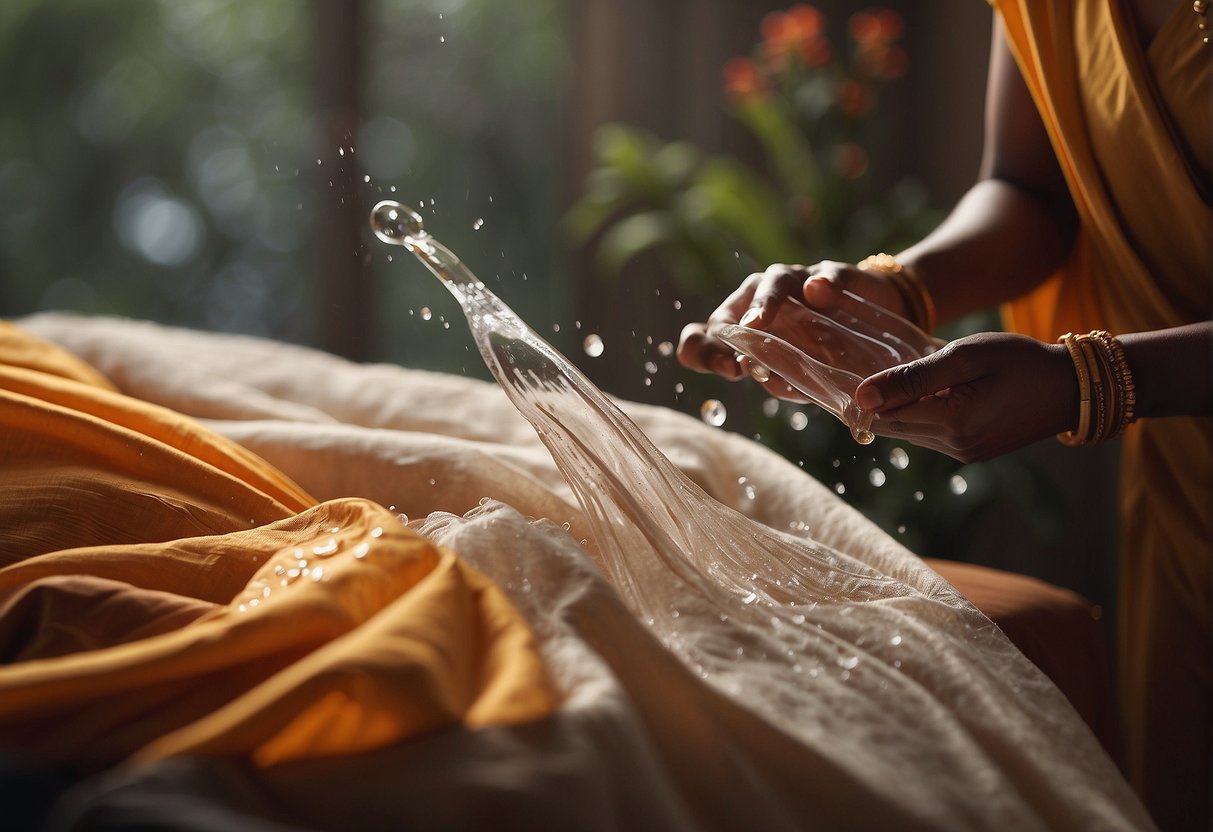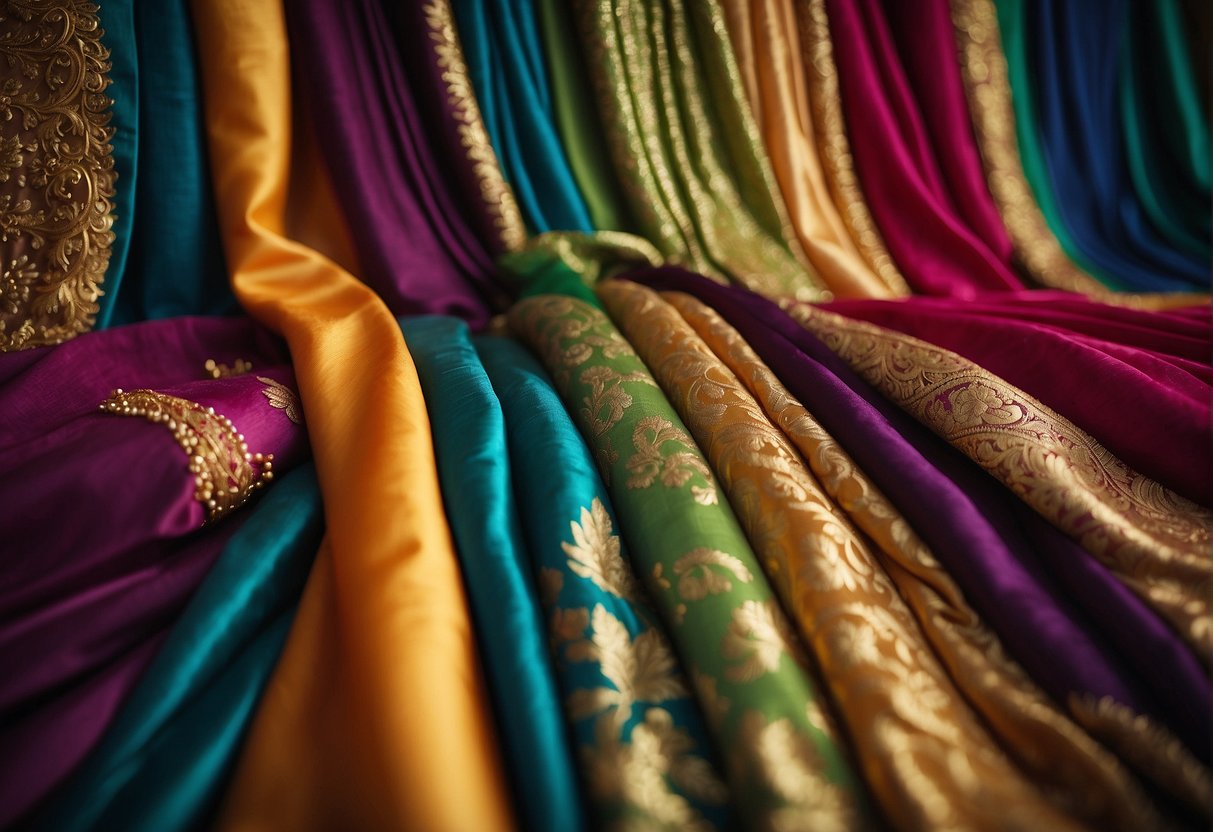Caring for delicate saree fabrics can be a challenging task, especially if you're new to ethnic fashion. Sarees are a traditional Indian garment that comes in a variety of fabrics, including silk, chiffon, and cotton. Each fabric type has its unique texture and requires specific care to maintain its quality. The key to keeping your saree looking new is to handle it with care and follow the do's and don'ts of saree care.

When it comes to saree care, the first and most crucial step is to identify the fabric type. Each fabric type has its unique texture and requires specific care to maintain its quality. For instance, silk sarees should be dry-cleaned or hand-washed with mild detergent, while cotton sarees can be machine-washed with cold water. It's essential to follow the fabric care instructions to avoid damaging the saree.
In this article, we'll discuss the do's and don'ts of caring for delicate saree fabrics. We'll cover everything from storing your saree to washing and ironing it. By following these tips, you can ensure that your saree looks new and vibrant for years to come. So, let's get started!
Understanding Saree Fabrics and Their Characteristics

Identifying Different Types of Saree Fabrics
Sarees come in a variety of fabrics, each with its unique characteristics that affect its drape, texture, and overall appearance. Some of the most common saree fabrics are silk, cotton, georgette, chiffon, linen, satin, wool, nylon, and polyester.
Silk sarees are known for their smooth texture, shimmering sheen, and rich drape. They are a popular choice for weddings, festivals, and formal events. Kanjeevaram, Banarasi, and Tussar are some of the most celebrated varieties of silk sarees.
Cotton sarees, on the other hand, are lightweight, breathable, and easy to maintain. They are perfect for everyday wear and are available in a range of colors and designs.
Georgette and chiffon sarees are flowy fabrics that drape beautifully and are perfect for creating a feminine, elegant look. These fabrics are lightweight and comfortable, making them ideal for summer or outdoor events.
Linen sarees are known for their crisp texture and are perfect for creating a casual, relaxed look. They are breathable and ideal for hot, humid climates.
Satin sarees are known for their lustrous finish and are perfect for creating a glamorous, sophisticated look. They are often used for evening wear and formal events.
Wool, nylon, and polyester sarees are less common but are still used in some saree designs. Wool sarees are warm and perfect for winter wear, while nylon and polyester sarees are lightweight and easy to maintain.
The Impact of Fabric Type on Saree Draping and Fit
The fabric type plays a crucial role in determining the drape and fit of a saree. Flowy fabrics like georgette and chiffon drape beautifully and are perfect for creating a feminine, elegant look. Crisp fabrics like linen, on the other hand, are stiffer and may not drape as well.
The fabric type also affects the saree's fit. Body type and frame should be taken into account when choosing a saree fabric. Flowy fabrics like georgette and chiffon are ideal for those with a pear-shaped body, while crisp fabrics like linen are perfect for those with an apple-shaped body.
In conclusion, understanding saree fabrics and their characteristics is essential when choosing the perfect saree. The fabric type affects the saree's drape, texture, and fit, making it important to consider when selecting a saree for any occasion.
Practical Tips for Saree Care and Maintenance

Do's and Don'ts for Washing and Storing Sarees
When it comes to washing and storing delicate sarees, there are a few do's and don'ts to keep in mind. Here are some practical tips to help you care for your sarees:
-
Do's for Washing Sarees: Always follow the care instructions on the label of your saree. If there are no specific instructions, handwashing is generally the safest option for most delicate sarees. Use a mild detergent and lukewarm water to wash your saree. Do not use hot water or bleach, as this can damage the fabric. After washing, gently squeeze out excess water and hang the saree to dry in a shaded area.
-
Don'ts for Washing Sarees: Do not wring or twist your saree while washing, as this can damage the fabric and cause it to lose its shape. Do not use a washing machine to clean your saree, as the agitator can cause damage to delicate fabrics. Also, avoid using safety pins or any sharp objects that can cause tears or holes in the fabric.
-
Do's for Storing Sarees: Always store your sarees in a cool, dry place that is free from humidity and direct sunlight. It is best to store sarees flat rather than hanging them, as this can help prevent stretching and distortion of the fabric. If you must hang your saree, use a padded hanger and avoid hanging it for extended periods of time.
-
Don'ts for Storing Sarees: Do not store your sarees in plastic bags or covers, as this can trap moisture and cause mildew or mold to form on the fabric. Also, avoid storing sarees with heavy embellishments or prints with other sarees, as this can cause the colors to bleed and transfer onto other fabrics.
Best Practices for Wearing and Preserving Delicate Sarees
Wearing and preserving delicate sarees can be a bit of a challenge, but with the right techniques and tools, it is possible to keep your sarees looking beautiful for years to come. Here are some best practices to help you wear and preserve your delicate sarees:
-
Pinning and Pleating: When pinning and pleating your saree, use only plastic or fabric-covered pins to avoid damaging the fabric. Be sure to make the pleats evenly spaced and secure them with pins to keep them in place. If you are unsure about how to pleat your saree, there are many online tutorials and videos available that can guide you through the process.
-
Draping a Saree: When draping your saree, be gentle and take your time to avoid tugging or pulling on the fabric. Make sure the saree is draped evenly and that the pallu is draped over your shoulder securely. If you are unsure about how to drape your saree, there are many online tutorials and videos available that can guide you through the process.
-
Preserving Color and Prints: To preserve the color and prints of your saree, avoid exposing it to direct sunlight for extended periods of time. Also, avoid using harsh detergents or bleach when washing your saree, as this can cause the colors to fade or bleed. If you are unsure about how to wash your saree, it is best to consult a professional dry cleaner.
-
Handling Embellishments: If your saree has heavy embellishments, such as sequins or beads, be gentle when handling the fabric to avoid damaging the embellishments. It is best to store these types of sarees flat rather than hanging them, as this can help prevent the embellishments from becoming misshapen or falling off.
